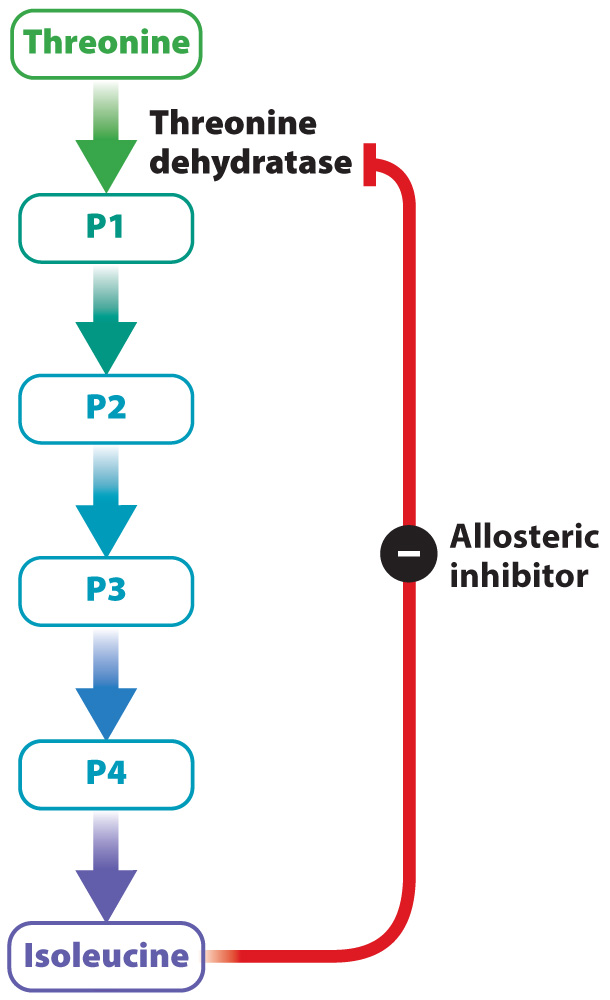Allosteric enzymes regulate key metabolic pathways.

Enzyme activators and inhibitors are sometimes important in the normal operation of a cell—
Once the bacterium has enough isoleucine for its needs, it would be a waste of energy to continue synthesizing the amino acid. To shut down the pathway once it is no longer needed, the cell relies on an enzyme inhibitor. The inhibitor is isoleucine, the final product of the five reactions. Isoleucine binds to the first enzyme in the pathway, threonine dehydratase, at a site distinct from the active site. As a result, threonine dehydratase is an example of an allosteric enzyme. The binding of isoleucine changes the shape of the enzyme and in this way inhibits its function.
The isoleucine pathway also provides an example of negative feedback, in which the final product inhibits the first step of the reaction. This is a common mechanism used widely in organisms to maintain homeostasis, that is, the active maintenance of stable conditions or steady levels of a substance (Chapter 5).
Threonine dehydratase can also adjust the rate of the reaction, depending on the concentration of substrate. At a low concentration of threonine, the rate of the reaction is very slow. As the concentration of threonine increases, the activity of the enzyme increases. At a particular threshold, a small increase in threonine concentration results in a large increase in reaction rate. Finally, when there is excess substrate, the reaction rate slows down.
In the next two chapters, we examine more closely two key metabolic processes, cellular respiration and photosynthesis. Both of these processes require many chemical reactions acting in a coordinated fashion. Allosteric enzymes catalyze key reactions in these and other metabolic pathways. These enzymes are usually found at or near the start of a metabolic pathway or at the crossroads between two metabolic pathways. Allosteric enzymes are one way that the cell coordinates the activity of multiple metabolic pathways.